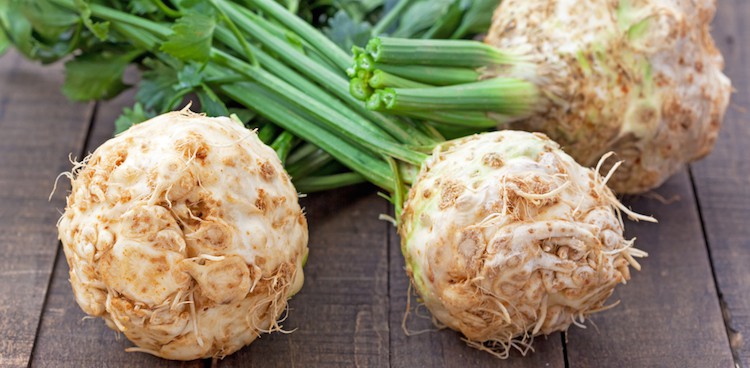
Celeriac is the ugly duckling of the vegetable kingdom. It’s a knobby, round root covered in warts, threadlike tendrils, and crevices from which it’s impossible to extract all the soil. The exterior won’t win any beauty contests, but cut away its thick outer skin and the swan emerges. The snow-white interior of this winter vegetable has delicious flavor and a texture porous enough to absorb additional seasoning, starchy enough for purees, and crisp enough to be satisfying in a salad.
Celeriac is sometimes called celery root, but that name is a little misleading. Gardenvariety celery plants will not yield the celeriac you see in the grocery store, but the two vegetables did develop from the same wild plant. Celeriac is also related to carrots, parsley, and parsnips. The root has the clean, herbal aroma of celery and parsley leaves, the sweetness of carrots, and the raw bite of parsnip.
Best of all, celeriac is a chameleon in recipes; you can substitute it for carrot, potato, or parsnip. It’s also a natural partner to any cheese. To warm a chilly winter night, try our recipe for Celeriac and Potato Gratin with Aged Cheddar, which combines creamy melted sharp cheddar with earthy and mild sliced potato and celeriac.
Photo Credit: Image of celeriac bulbs courtesy of Shutterstock



